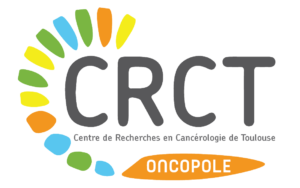Network medicine aims at using networks to uncover patterns in diseases and use them to understand their biology and propose new drugs.
Since the appearance of Covid19, the disease provoked by the SARS-Cov-2 virus, the research community all around the globe has been on a race to develop treatments or repurpose existing drugs for this new challenge.
We are now relieved by the existence of effective vaccines, but better understanding of this disease will improve treatment of patients who keep succumbing to it while the logistic challenge of world-wide vaccination is met.
We therefore suggest the use of network medicine to reveal the biological processes affected by this disease by compiling information from multiple public databases collecting information on protein and drug interactions as well as symptoms for other diseases .
In this study we introduce CovMulNet19, a comprehensive COVID-19 network containing all available known interactions involving the SARS-CoV-2 virus proteins, interacting-human proteins, related diseases, symptoms and drugs that can potentially target them. We used extensive network analysis methods to prioritize a list of diseases that display a high similarity to COVID-19 and a list of drugs that could potentially be beneficial to treat patients. Amongst the diseases that have high similarity with COVID-19, we find some of the conditions that were reported to be risk factors in patients to develop severe forms of COVID-19, including intestinal, hepatic, and neurological diseases as well as other respiratory conditions.
The database CovMulNet19 can be used as a valuable tool for exploring drug repurposing options but also to better understand the symptomatology of COVID-19, especially in the long-term forms. The network approach accounts for the intertwined relationships between molecular interactions, diseases and symptoms of this and all other diseases.
Discover the published article :
Netw Syst Med. 2020 Nov 17;3(1):130-141.doi: 10.1089/nsm.2020.0011. eCollection 2020.
CovMulNet19, Integrating Proteins, Diseases, Drugs, and Symptoms: A Network Medicine Approach to COVID-19
Nina Verstraete, Giuseppe Jurman, Giulia Bertagnolli, Arsham Ghavasieh, Vera Pancaldi, Manlio De Domenico.
Key Words :
- COVID-19,
- complex networks,
- disease network,
- interactome,
- proteins,
- symptoms.
Collaborations and acknowledgments
This was a collaboration with Manlio DeDomenico and Giuseppe Jurman at the Bruno Kessler Foundation in Trento, Italy.
The authors thank INSERM, the Fondation Toulouse Cancer Santé and Pierre Fabre Research Institute as part of the Chair of Bioinformatics in Oncology of the CRCT and BioInfo4Women programme at the Barcelona Supercomputing Center.
Contact :
Nina Verstraete
Team : CRCT-18
Contact : nina.verstraete@inserm.fr, vera.pancaldi@inserm.fr
One Picture

CovMulNet19 : COVID-19 genotype–phenotype–drug interaction network. (A) Nodes and schematic map of interdependencies among different layers encoding diseases, symptoms, drugs, GO terms, human proteins, and viral proteins. (B) Map of the reconstructed structural interactions (e.g., protein–protein) and functional interdependencies (e.g., protein–disease, protein–GO term, or disease–symptom). Overall, the network consists of 1999 protein–protein, 19,755 protein–disease, 10,152 protein–symptom, 13,018 drug–target, 9210 protein–GO, and 3056 disease–symptom relationships. https://covmulnet19.fbk.eu/

